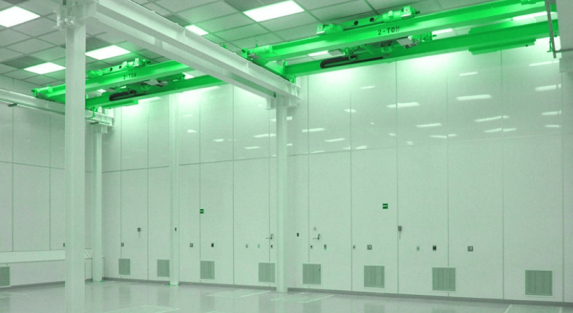Cleanrooms are critical environments designed to maintain low levels of particulate contamination to ensure the integrity of sensitive processes and products. Industries such as pharmaceuticals, biotechnology, semiconductor manufacturing, and aerospace heavily rely on cleanrooms to meet stringent cleanliness standards. A Cleanroom Particle Filtration System plays an indispensable role in achieving and maintaining these standards. This article explores why particle filtration is important in cleanrooms, its role in ensuring compliance, and how it impacts various industries.
Understanding Cleanroom Particle Filtration Systems
A Cleanroom Particle Filtration System is a combination of advanced technologies, filters, and mechanisms designed to control airborne particles, microbial contamination, and other pollutants. These systems typically use High-Efficiency Particulate Air (HEPA) or Ultra-Low Penetration Air (ULPA) filters to achieve desired cleanliness levels. Cleanrooms are categorized based on the number of particles allowed per cubic meter, with classifications ranging from ISO 1 (most stringent) to ISO 9 (least stringent).
The effectiveness of particle filtration systems is crucial for maintaining these classifications, as even microscopic particles can compromise sensitive operations. For example, a single particle in a semiconductor cleanroom can cause defects in microchips, leading to financial losses and reputational damage.
Why Is Particle Filtration Important?
1. Ensuring Product Quality
Contaminants in cleanrooms can lead to product defects, reduced yields, and compromised safety. For instance:
In pharmaceuticals, contaminants can degrade drug efficacy or introduce harmful substances.
In semiconductor manufacturing, a particle as small as 0.5 microns can destroy an entire wafer.
A Cleanroom Particle Filtration System minimizes these risks by trapping particles and preventing their spread, ensuring consistent product quality.
2. Maintaining Regulatory Compliance
Industries that rely on cleanrooms must adhere to strict regulations and standards set by organizations like the International Organization for Standardization (ISO) and the U.S. Food and Drug Administration (FDA). Non-compliance can result in:
Legal penalties
Product recalls
Loss of certifications
Effective particle filtration systems help organizations maintain compliance by ensuring the environment meets specified cleanliness levels.
3. Protecting Sensitive Processes
Some processes are highly sensitive to environmental conditions. For example:
In biotechnology, contamination can ruin entire batches of cell cultures.
In aerospace, particulate matter can compromise the integrity of critical components.
Cleanroom Particle Filtration Systems provide the controlled environment necessary for these processes to succeed.
4. Ensuring Personnel Safety
In certain industries, such as pharmaceuticals and biotechnology, personnel are exposed to hazardous substances. Particle filtration systems protect workers by:
Containing airborne contaminants
Reducing exposure to harmful particles
This not only safeguards employees but also reduces liability for companies.
Components of a Cleanroom Particle Filtration System
A robust Cleanroom Particle Filtration System comprises several components working in harmony to achieve optimal cleanliness. These include:
1. Pre-Filters
Pre-filters capture larger particles, extending the lifespan of HEPA and ULPA filters. They act as the first line of defense in particle filtration.
2. HEPA and ULPA Filters
HEPA Filters: Capture 99.97% of particles as small as 0.3 microns.
ULPA Filters: Capture 99.999% of particles as small as 0.12 microns.
These filters are critical for maintaining ISO-classified cleanliness levels.
3. Air Handling Units (AHUs)
Air Handling Units regulate airflow and temperature while ensuring filtered air is uniformly distributed throughout the cleanroom.
4. Laminar Flow Units
Laminar flow systems direct air in a unidirectional stream, reducing turbulence and minimizing the risk of particle redistribution.
5. Monitoring Systems
Continuous monitoring systems track particle counts, airflow, and filter performance to ensure the cleanroom remains within specifications.
Types of Particles in Cleanrooms
Understanding the types of particles in cleanrooms highlights the importance of effective filtration systems:
1. Airborne Particles
These include dust, skin flakes, and fibers that can compromise cleanliness.
2. Microbial Contaminants
Bacteria, fungi, and viruses can pose significant risks, especially in healthcare and pharmaceutical industries.
3. Chemical Vapors
Volatile organic compounds (VOCs) can contaminate processes and degrade products.
4. Process-Generated Particles
Particles generated during manufacturing processes, such as machining or material handling, can affect precision and quality.
The Science Behind Particle Filtration
Particle filtration operates on principles of interception, impaction, and diffusion:
Interception: Particles follow airflow but are captured when they come into contact with filter fibers.
Impaction: Larger particles deviate from airflow and collide with filter fibers.
Diffusion: Smaller particles collide with air molecules, reducing their velocity and increasing the likelihood of capture.
These mechanisms ensure high efficiency in removing particles of varying sizes.
Key Applications of Cleanroom Particle Filtration Systems
1. Pharmaceuticals and Biotechnology
Particle filtration prevents contamination in drug manufacturing and research, ensuring products are safe and effective.
2. Semiconductor Manufacturing
Cleanrooms with advanced filtration systems enable the production of defect-free microchips and electronic components.
3. Healthcare
In hospitals and laboratories, filtration systems maintain sterile environments for surgeries, research, and testing.
4. Aerospace
Particle-free environments are essential for assembling and testing spacecraft components to ensure their reliability in space.
Challenges in Cleanroom Particle Filtration
1. Filter Maintenance
Clogged filters reduce airflow and efficiency. Regular maintenance is critical to avoid system failures.
2. Energy Consumption
High-performance filtration systems can be energy-intensive, requiring efficient designs to minimize operational costs.
3. Monitoring and Validation
Continuous monitoring is essential to detect deviations and ensure compliance, but it requires advanced equipment and expertise.
Advancements in Cleanroom Particle Filtration Technology
1. Smart Filters
Equipped with sensors, these filters monitor performance in real-time and provide alerts for maintenance.
2. Nanotechnology
Nano-fiber filters offer higher efficiency and lower pressure drops, improving overall system performance.
3. Energy-Efficient Designs
Innovations in air handling units and filter materials reduce energy consumption without compromising cleanliness.
Conclusion
A Cleanroom Particle Filtration System is the cornerstone of maintaining controlled environments for sensitive industries. By ensuring product quality, regulatory compliance, and personnel safety, these systems play a vital role in the success of cleanroom-dependent operations. As technology advances, the future of cleanroom particle filtration promises greater efficiency, reliability, and sustainability. Understanding the importance of these systems underscores their value in protecting processes, products, and people.







 (2).png)
.png)


 (1).png)
.png)